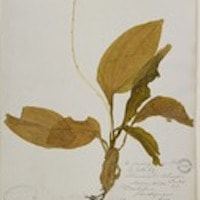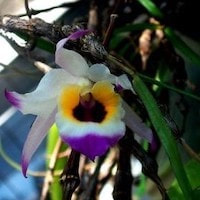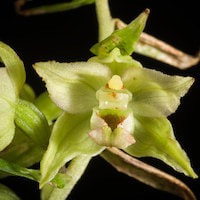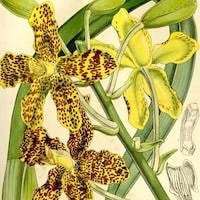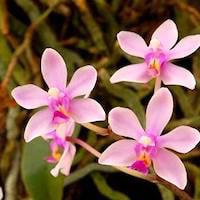WFR5- Women's Fresh 5 - Whispering rain
|
Native Singaporean Orchid notes: Bulbophyllum Vaginatum
Vrydagzynea albida is a plant thriving in lower montane tropical rainforests, often near streams in shady, moist spots, growing from creeping rhizomes. It boasts erect stems with evenly spaced 6 to 8 leaves. Blooming from late spring to early fall, its inflorescence, covered in fine hairs, holds multiple flowers opening sequentially in an apical corymb. While its flowers aren't highly scented, extracted oil from Vrydagzynea albida carries a pleasant, gentle fragrance.
|
Therapeutic Orchid notes:
|
Crepidium resupinatum (G. Forst.) Szlach. Syn. Seidenfia rheedii (Sw.) Szlach. (see Liparis rheedii Sw.); Seidenfia versicolor Marg. & Szlach.
Crepidium resupinatum, also known as Seidenfia rheedii and Seidenfia versicolor, is an orchid species containing various compounds in its pseudobulb, such as alkaloids, glycosides, and flavonoids, among others. One prominent alkaloid, grandifoline, is derived from nervogenic acid and laburnine. This orchid is utilized in herbal medicine in the western Indian peninsula, where extracts from its pseudobulb are used to prepare a potion for treating fever, biliousness, and infantile epilepsy, showcasing its medicinal importance in traditional practices. |
|
Dendrobium falconeri Hook.f. syn Dendrobium erythroglossum Hayata
Dendrobium falconeri, also known as Dendrobium erythroglossum, is recognized by various names across regions like Xinzhushihu and Honglishihu in China, and as red oriole Dendrobium in Taiwan. In Thailand, it is referred to by names such as Ueang sai wisut and Rot rueang saeng. This orchid features long, slender, pendulous stems that are branched and knotted. Studies indicate its potential to reduce protein levels in lung cancer cells. In Traditional Chinese Medicine (TCM), its stem is used to nourish yin, benefit the stomach, and alleviate heat-related symptoms like dry mouth and throat, making it valuable in aiding recovery and treating conditions like anorexia. |
|
Epipactis papillosa Franch et Sav.
Epipactis papillosa, also called Ximaohuoshao Lan or fine fur flaming orchid in Chinese, is known by medicinal names like Jisuzihua (cockerel crop flower) and Niushepian (slice of a cow's tongue). In India, its stems and rhizomes are used to treat insanity, while in Chinese herbal medicine, the whole plant is employed to strengthen the "middle burner" and restore qi after illness. It is also used for ailments such as cholera, testicular swelling, and hernia, showcasing its medicinal versatility and recognized therapeutic properties. |
|
Grammatophyllum speciosum Blume
Grammatophyllum speciosum, known as the Tiger Orchid, is widespread across Southeast Asia, including Burma, Thailand, Malaysia, Indonesia, and the Philippines, thriving in lowland regions. In Singapore, it blooms between August and September after reaching a considerable size. Herbal uses include treating fever and anemia in Thailand using the orchid's stem. In Sarawak, the Kelabit people consume its stems as food despite a slightly bitter taste when cooked, showcasing its cultural and practical significance in local traditions. |
|
Phalaenopsis wilsonii Rolfe
Phalaenopsis wilsonii, known as the Butterfly Orchid or Western China Butterfly Orchid, thrives as an epiphyte in China and northern Vietnam, often found on trees or rocks in shady areas. It's notable for its natural resistance to fungal infections, bacterial rot, and various pests. Rich in alkaloids, especially phalaenopsine, it's prized for its medicinal potential, particularly in traditional treatments for headaches. Despite containing pyrrolizidine alkaloids, typically toxic in plants, those in Phalaenopsis wilsonii are believed to be non-toxic. Moreover, its fragrant properties, contributed by compounds like geraniol and linalool, add to its allure beyond medicinal uses. |
Other scent note
Fresh clean cotton notes, green melon, Chamomile, Avocado, Grass, Water Hyacinth, Olive leaf, pear leaf, Sea water
Scentopia Library Reference ingredient
Grass - Check details at Scentopia's scent library
Download the guided mediation that works best with this Orchid fragrance oil
| women_fresh_essential_oil_orchi_00005.mp3 | |
| File Size: | 177785 kb |
| File Type: | mp3 |

